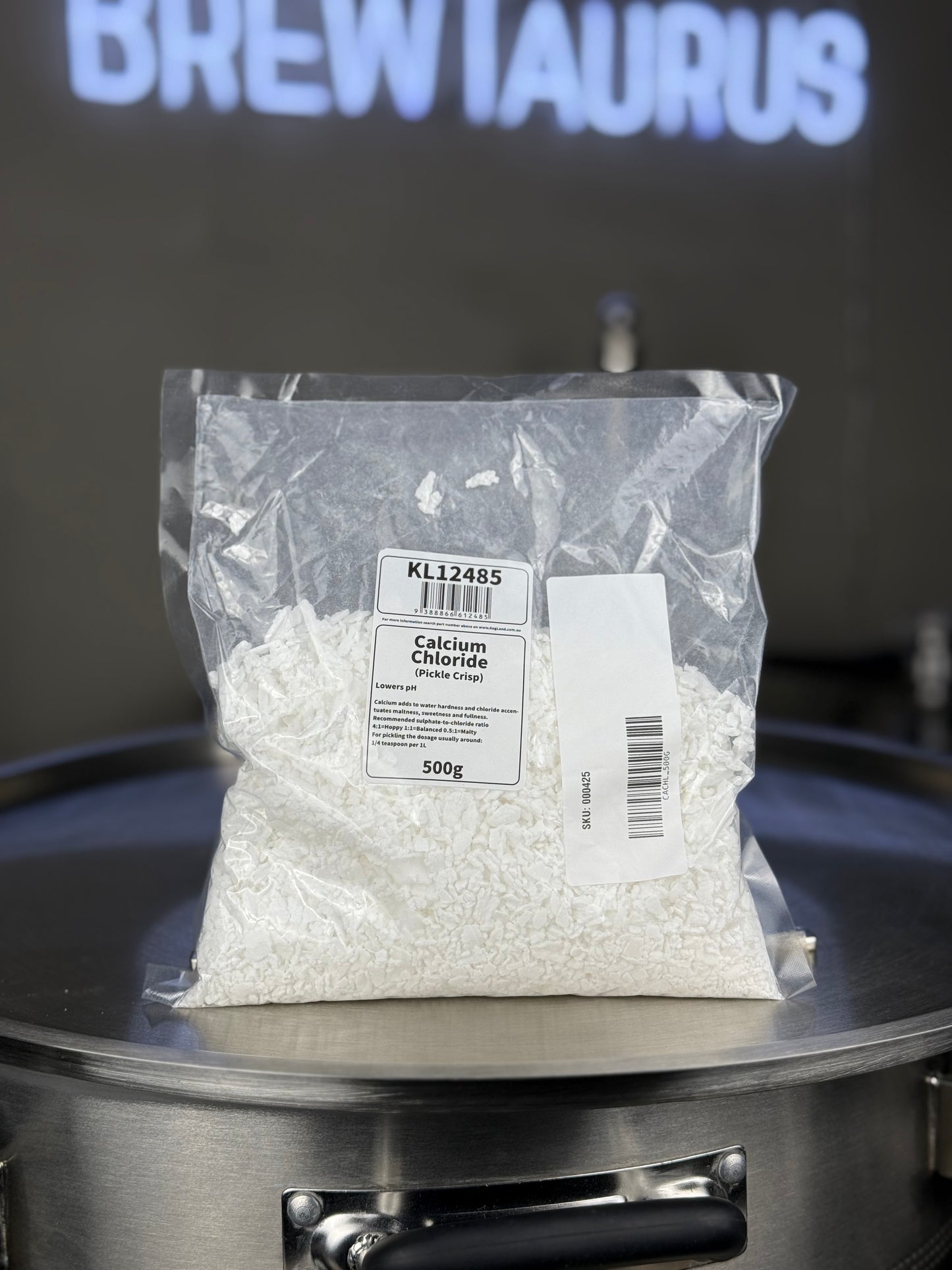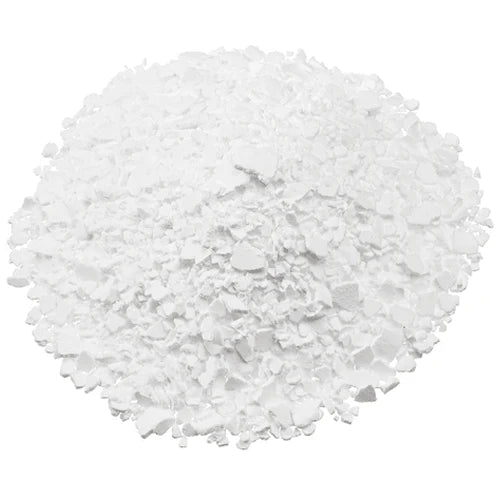KegLand
Calcium Chloride (Pickle Crisp) - 500g
Calcium Chloride (Pickle Crisp) - 500g
Couldn't load pickup availability
Calcium Chloride (Pickle Crisp) - 500g
Lowers Mash pH
Calcium Chloride (CaCl2·2H2O) 1kg
Adjusts brewing water, accentuates maltness and lowers mash pH.
Calcium adds to water hardness and chloride accentuates maltness, sweetness and fullness. Typical concentratons for brewing water are 50 – 150 ppm Ca2+ and 50 – 150 ppm Cl- . It is also used to lower the mash pH. Additons can be put in the brewing water or directly into the mash.
Recommended sulphate-to-chloride ratoss:
4:1 – Hoppy 1:1 – Balanced 0.5:1 – Malty
Calcium Chloride (Pickle Crisp) - 500g
Lowers Mash pH
Calcium Chloride (CaCl2·2H2O) 1kg
Adjusts brewing water, accentuates maltness and lowers mash pH.
Calcium adds to water hardness and chloride accentuates maltness, sweetness and fullness. Typical concentratons for brewing water are 50 – 150 ppm Ca2+ and 50 – 150 ppm Cl- . It is also used to lower the mash pH. Additons can be put in the brewing water or directly into the mash.
Recommended sulphate-to-chloride ratoss:
4:1 – Hoppy 1:1 – Balanced 0.5:1 – Malty
Calcium (Ca)
Calcium is the primary ion determining the “permanent hardness” of the water. Calcium plays multiple roles in the brewing process including lowering the Ph during mashing, aiding in precipitation of proteins during the boil, enhancing beer stability and also acting as an important yeast nutrient. Calcium levels in the 100 mg/l range are highly desirable, and additives should be considered if your water profile has calcium levels below 50 mg/l. The range 50mg/l to 150 mg/l is preferred for brewing.
Chloride (Cl)
Chloride, like sodium, also enhances the mouthfeel and complexity of the beer in low concentrations. Chlorine is often used in city water supplies to sanitize, and can also reach high concentrations from use of bleach as a brewing sanitizer. Heavily chlorinated water will result in mediciny or chlorine-like flavors that are undesirable in finished beer. Normal brewing levels should be below 150 mg/l and never exceed 200 mg/l. If you have heavily chlorinated city water you can reduce it using a carbon filter or by pre-boiling the water for 20-30 minutes before use.
Adjusting your Water
Different styles of beer require different water profiles. Often a particular beer is associated with the water profile of the city in which the beer originated. For a listing of water profiles for popular brewing cities of the world, you can visit BeerSmiths water profile listing. If you have a target profile in mind, you can adjust your water to match that profile.
You can dilute your local tap water with distilled water if some ion counts are too high for your target water profile. Similarly you can use additives to increase the level of key ions. Popular additives include table salt (NaCl), Gypsum (CaSO4), Calcium Chloride (CaCl), Epsom Salts (MgSO4), Baking Soda (NaHCO3), and Chalk (CaCO3).
Unfortunately the additives do not add a straightforward amount of ions to the water profile, so its best to use some kind of water profile tool to adjust your local water supply to reach a target profile. Usually only a few grams of additives is required to achieve your target profile. BeerSmith has a water profile tool available to perform this very function. Other water profile tools are also available online.
The Sulfate to Chloride Ratio
Chloride ions tend to enhance the malty aspects of beer, as well as enhance the perception of mouthfeel. Chloride concentrations in excess of 200 ppm in particular tend to give a full malty taste. Sulfate ions, in contrast, tend to accentuate hop flavors and bitternes, often leading to the perception of a drier and cleaner finish. Sulfate levels above 200 ppm are best reserved for hoppy beers like IPAs.
The Sulfate to Chloride ratio can be stated simply as the ratio of sulfate (SO4) ions (in ppm or mg/l) to the concentration of Chloride (Cl) ions. You simply divide sulfate by the chloride ion concentration. A ratio of around 1:1 (or 1.0) is considered balanced in that the water will neither enhance the malt or hop flavor. Ratios below 1 tend to lend more malt character and those above 1 tend to enhance the hop character of a beer. Note that some references have it listed as “Chloride to Sulfate ratio” which is basically the same measure but inverted.
Smith, B. (2006). Brewing Water – Hard or Soft? | Home Brewing Beer Blog by BeerSmith™.
Share
SKU:000425
View full details



